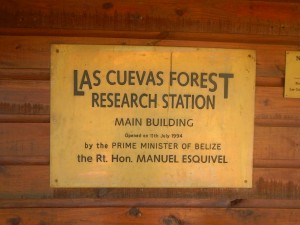…or did we.
Morning departure was delayed by unforeseen complications with the transportation, so we did not get on our way until around noon; we were supposed to leave at seven am. This made problematic our visit of the ATM cave, and it was unclear if we would be able to see it at all. Luckily Boris, a worker for FCB, gave us a tour to pass our time.
Spoiler alert: we skipped the cave. I was upset, but after spending all day in a cramped van/bus, I was already claustrophobic enough for one day. We did get a chance to buy some souvenirs and smoothies (yum) at our pitstop on the way. AND SNACKS FOR DAYS.
The day took a turn, however, when we arrived at the Belize Zoo and got to take part in a private night tour. We saw none of my taxa, but to be honest, the animals we saw were significantly more exciting. A black jaguar (named Lucky Boy) and a tapir (named Indy) were my two favorite animals because we got to touch them! That’s right mom and dad, I touched a jaguar and survive to tell the tale. Granted it was behind a fence and I still flinched when it tried to get my hand with its HUGE TOOTH FACE, but I feel accomplished.
Tomorrow we begin the reef portion of the course and I am excited and ready to present to you the diversity of sponges at Glover’s Atoll!
















